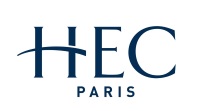No 984: Entrepreneurial Spawning and Firm Characteristics
Pierre Mella-Barral (), Michel A. Habib () and Ulrich Hege ()
Abstract: We analyze the implications of the decision to spawn or to retain a new product for the nature and evolution of the firm. In our model, a new product is spawned if the fit between the product and its parent firm organization is not adequate. We focus on the impact of the firm's history of spawning decisions on firm characteristics such as size, focus, profitability, and innovativeness, and analyze its role in shaping firm dynamics. In accordance with the empirical literature, our model predicts that older firms innovate less, spawn less, are more diversified and less profitable, and that firms with more valuable general or specialized resources innovate and spawn more. Echoing seemingly contradictory empirical findings, our model predicts that small, focused firms (large, diversified firms) innovate and spawn more, and are more profitable when sample heterogeneity is driven by the importance of organizational fit (the value of general resources)
Keywords: spawning; spinoffs; spinouts; general and specialized resources; firm organization; organizational fit; firm size; focus; profitability; innovativeness; spawning dynamics
34 pages, March 1, 2013
Full text files
papers.cfm?abstract_id=2023474
Questions (including download problems) about the papers in this series should be directed to Antoine Haldemann ()
Report other problems with accessing this service to Sune Karlsson ().
RePEc:ebg:heccah:0984This page generated on 2025-06-10 11:14:55.

